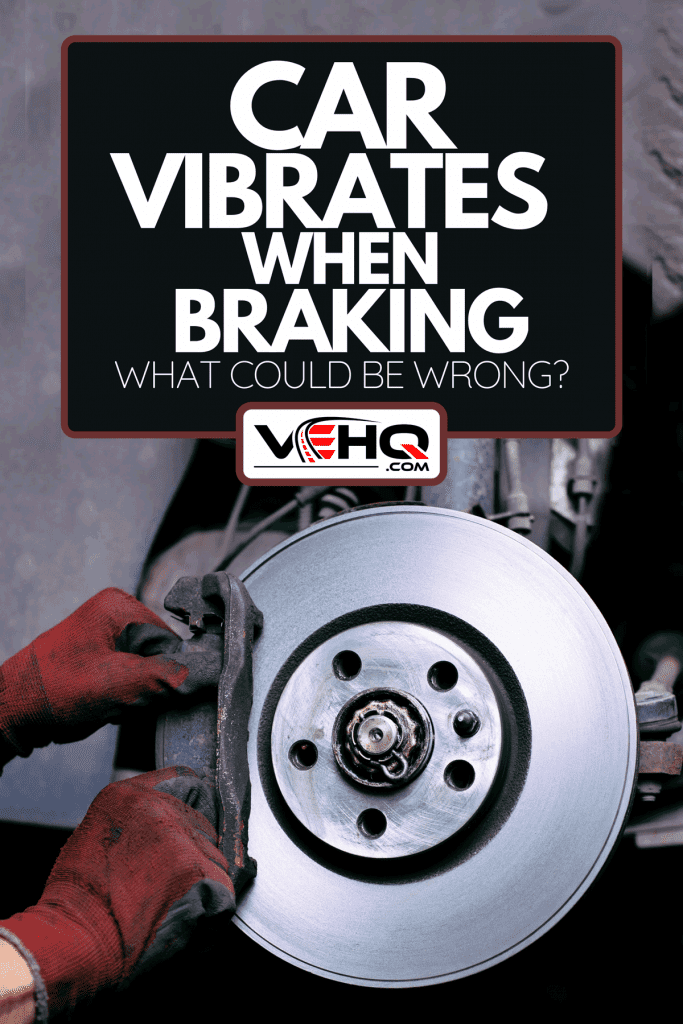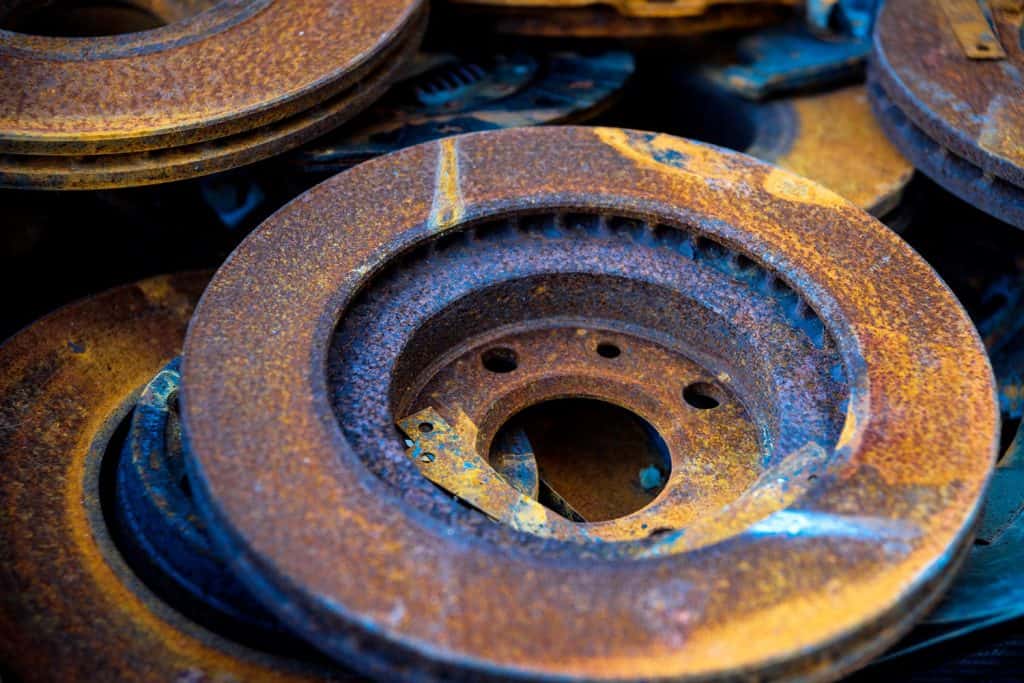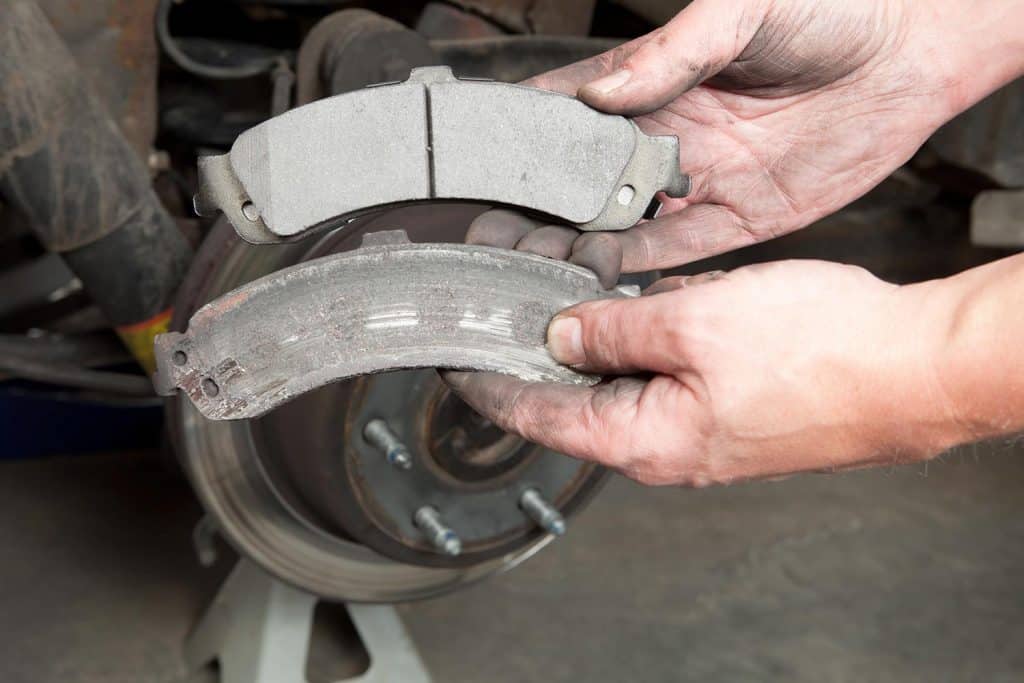Nothing is more worrying than something going wrong with your vehicle all of a sudden. Some issues will prevent you from driving. Others lean more towards a test of time. The car works, but you can't shake the feeling that something will go wrong. If you're wondering why your car is vibrating when braking, let's find out what others have to say!
Unfortunately, brake shudders will require you to check on multiple components. The issue could arise from the brake system itself or other parts—like the tires. If you'd like to have a general idea of what could be causing the problem, you will need to check components such as:
- The tires
- Brake rotors
- Brake pads
Of course, it isn't enough to know what components to check. You'll also need to know how to fix them. Additionally, learning what causes these problems will help you ensure you take the steps necessary to avoid them from happening again. If you'd like to learn this and more, keep reading ahead.

The Culprits of a Car Vibrating When Braking
To get to the root of the problem, we'll need to narrow down our choices. We'll check the exposed components first before moving on to the internals. This way, we don't waste time looking in areas where there are no problems. Without further ado, let's take our first step towards a functioning car.
The Wheels
The first component you'll want to check is the tires. If your car begins to shake - especially at high speeds - the issue may come from the tire or the alignment. Inspect the quality of your tires first. If you see no irregularities, then there could be alignment issues.
To make it clear that the problem you're facing is coming from alignment issues, you can run a test. Some suggest driving your car up to 50-60 mph in a straight path. Of course, you'll need to do so in a safe environment with no traffic.
As you're driving, let go of the steering wheel momentarily. Quickly observe how the steering wheel behaves. If your car begins to move to the left or right, the wheels will need to be realigned.
The Brake System
If you've found no problems with the tires, the next step would be to check the braking system. Checking the brakes should be the first area you should inspect if the problem is only present when you're braking. There will be three situations that you will need to identify yourself with.
Problems with the braking system occur in three of the following ways:
- Improper installation - applies to you if you've recently installed new brakes.
- Warped rotor - you've used your car frequently. And, the rotors are naturally beginning to warp through wear and tear.
- Long periods of inactivity - it's been some time since you've driven your car. In this case, the rotors tend to wear away even when they're not in use. It will have a similar effect to warped rotors.
Regardless of the situation, you'll first need to know how to tell if your rotors are wearing out.
How Do I Know When My Rotors Are Bad?

There are three tell-tale signs that you'll need to inspect your brake rotors. You will have to use three of the five senses - how the car feels, sounds, and what you see.
The first sign to look out for will require you to jog your memory. When you've noticed the car shaking, did a strange noise accompany it? If you can't remember, test the car again and listen to the brake noise. Any squeaking or squealing sounds that occur might indicate that your rotors are worn down to the metal.
The next step to do is to turn your wheels all the way to the left or right. This way, you get a clear view of the rotors. Do you see a metal disc? That's the rotor! Let's go over some signs that could be cause for concern.
Last but not least, what you feel during the situation is also another indicator of bad brake rotors. You would feel the vibrations go through your foot only when you apply the brakes. In this case, let's explore the rotors further.
Signs of a Bad Rotor
As some suggest, the first sign will have to concern the coloration of the disc. Does your brake rotor have a blueish color? It indicates there's a problem with excessive heat.
A likely cause for the blue coloration is driving while keeping your brakes engaged. If this situation applies to you, you might've warped the rotor without noticing.
Excessive Wear
If there are no problems with coloration, it might be the case that it's time to replace the brake rotors. Like most components, it will wear out over time. As some professionals suggest, you'll need to replace the rotors every 70,000 miles. It could be as soon as 15,000. It all depends on your driving behaviors.
To check if it's a simple case of a worn-out rotor, inspect them for any grooves or scoring. These imperfections are the cause of the noise we've mentioned above. If this seems to fit your situation the most, getting them replaced should fix the problem of shaking.
The Brake Pads
In the situation where you've found no issues with the rotors, you'll need to move along and inspect the component next to it - the brake pads. Much like the rotors, brake pads also have their own expiration date. Bridgestone recommends replacing your brake pads every 30,000-80,000 miles.
Let's go over the signs of worn-out brake pads. In general, they exhibit the same problems as a worn-out rotor would. Though, there's a slight difference in the noise it makes. Instead of squealing or screeching, the noise it makes resembles more of a growl or metallic grinding.
If you hear this sound, the brake pad is not the only culprit. The backing plates are also worn away.
Use Your Indicator Light
There will be an indicator light that will signal it's time to change the brake pads. However, this depends on the car you own. Check your owner's manual to see if your vehicle includes a warning for a brake pad change.
Inspecting the Brake Pads
The last way you can check for faulty brake pads is by inspecting the part itself. But, it might require removing the wheels. If there's less than a quarter of an inch of brake pad left, you'll need to have your brakes inspected.
Can a Brake Rotor Be Out of Balance?
Brake rotors are one part that you might think about balancing. It is only after trying many other methods to address the issue of brake shudders. So, it begs the question, can a brake rotor be out of balance? And, is it a worthwhile endeavor?
As professionals suggest, a rotor should never be out of balance. That is if you've purchased quality rotors. When you buy rotors from a reputable manufacturer, they'll most likely balance the rotor themselves without any possibility for it to go out of balance.
With rotors of lower quality, manufacturers will use lead weights to balance them. In some cases, the lead weights can fall out - causing the rotor to go out of balance. Quality rotors won't have any added weight for balance. Instead, they use mill balances or no mill balances at all.
What Causes Out of Balance Rotors?
As mentioned above, there shouldn't be any balance issues with the rotors. However, there are cases where the rotors can warp. When they warp, it can have similar symptoms to tire imbalances. This situation is what might be causing you to think it's a rotor imbalance. That is not the case.
As we've mentioned, brake rotors will warp because braking causes friction. Friction generates heat. As you may already know, when metal gets too hot, it becomes more malleable. And, when it comes in contact with the brake pads, it could warp out of shape.
Fixing the irregularity is what professionals call turning or resurfacing. They will need to scrape down the rotor to achieve a smooth surface. However, it's much easier to get them replaced rather than turned.
How Much Does It Cost To Balance Your Rotors?
Again, as long as you have quality rotors, you won't have to balance them. So, if you do have unbalanced rotors from a lower-quality manufacturer, you'll need to replace them. That leaves us with the situation of warped brake rotors. How much would it cost to turn them?
As some suggest, it will cost around $15-$25 per rotor. However, by turning the rotors, you're decreasing the thickness. Instead, it might be a better solution to buy new rotors. This way, you have rotors that have an adequate ability to absorb and dissipate heat. Turning them is only a temporary solution.
They'll be more prone to warp again. Getting new ones will prevent you from having to visit a repair shop to turn them again.
Final Takeaway
Cars require a lot of maintenance. It's crucial that you get to the root of the problem to ensure you won't have to revisit a repair shop. With that in mind, we hope you found the information above helpful!
Before you go, do you want to cross off all the issues that could arise? If you're still hesitant that you'll find a solution with the information above, we have other articles with other areas you can check. To learn more, check out our post - Why Does My Car Shake When Driving Fast?
Is the car shaking at low speeds or while you're sitting idle? We also have an article for this specific case. If you'd like to learn more, check out our post - Car Shakes When Idle Or Driving Slow Speeds - What To Do?
Until next time - good luck troubleshooting!

